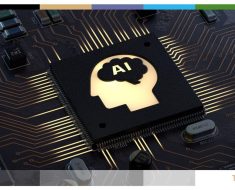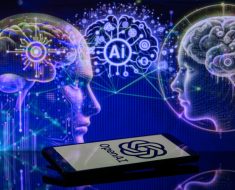In today’s rapidly globalizing world, being able to communicate across languages stands as a key element of both cultural and economic interaction. Traditional translation has always been important for grasping the full spectrum of world languages but struggles with being slow, less accurate, and hard to scale up.
Then comes artificial intelligence (AI), setting the stage for a significant revolution in language translation. This article will dive into AI’s impact on translation, aiming for a future where language barriers don’t limit human connections.

The Rise of AI Translation
The rise of AI translation signals a massive move towards easier and more inclusive global conversations. The dream of instant translation is now a reality, thanks to AI translation tools that deliver fast and surprisingly accurate translations.
This shift rides on massive tech advances, bringing top-tier AI translation capabilities to everyone, from big companies to individuals. The true advantage of this shift lies in its ability to transcend mere words, fostering stronger human connections.
How AI Powers Translation
Intricate algorithms and sophisticated technologies like machine learning and natural language processing (NLP) form the foundation of AI translation. These technologies empower AI systems to learn from extensive datasets containing millions of words and their translations. Over time, this data training enhances the system’s ability to understand context, nuance, and the intricacies of language.
Neural machine translation (NMT) is the pinnacle of this technology, offering translations that capture not just the literal meaning but the contextual essence of the original text. It’s a leap towards achieving translations that are as fluent and natural as if written by a native speaker.
Quicker Translation
Gone are the days of prolonged waits for translated documents. With AI-driven translation, speed is the name of the game. Say farewell to waiting days or weeks; now, AI can translate vast quantities of text within mere seconds. This rapid turnaround time is reshaping various industries, catering to the urgent needs of legal services requiring swift document turnovers and empowering global businesses aiming to expand into new markets.
Enhanced Precision
AI translation is evolving to be faster and more precise. With ongoing improvements in AI, translations are now much more accurate. The time when businesses had to worry about mistakes and misunderstandings is over. AI translations are now more dependable, which reduces worry and makes businesses more confident in the translations they receive.
Revolutionary Impact
Combining speed with accuracy, AI translation is making waves in various sectors. It’s not just about making things easier; it’s changing the way companies work.
For example, legal professionals can go through documents quickly and with more assurance, and international businesses can grow their markets with confidence. AI translation is more than a simple tool; it’s transforming the business world, helping companies succeed in a changing international environment.
Broadening the Scope
With the introduction of AI translation tools, the way we communicate across languages has been completely changed, making it possible to scale up and save costs like never before. In a time when global communication is growing rapidly, traditional translation methods can’t meet the demand for content in multiple languages. AI systems can process large amounts of text quickly and efficiently, offering a solution that human translators can’t match.
Empowering Organizational Efficiency
The transformative potential of AI translation extends beyond mere efficiency gains; it fundamentally reshapes how organizations manage and leverage linguistic assets. For entities grappling with copious amounts of data or content across linguistic barriers, AI offers a lifeline, streamlining processes and enhancing productivity.
Moreover, the substantial cost advantages associated with AI-driven translation solutions empower businesses of all sizes to harness the power of multilingual communication without breaking the bank.
Democratizing Linguistic Access
By significantly reducing the financial barriers to linguistic diversity, AI translation heralds a new era of inclusivity in global communication. Traditionally, access to high-quality translation services has been prohibitively expensive for many businesses, stifling their ability to compete on a global scale.
But now, more affordable AI translations offer an alternative, allowing various organizations to join the multilingual market. This opens up more cultural exchanges and business opportunities.
Navigating Language Nuances
AI translation technologies occasionally falter when faced with languages peppered with idiomatic expressions and cultural nuances. The intricacies of these languages demand a deep understanding of local contexts and traditions, a challenge AI is yet to fully master. Addressing these nuances is crucial for translations that resonate with cultural authenticity.
Teaming up With Humans
The fusion of AI’s computational power with human intuition offers a potent solution to the limitations of standalone AI translation. This collaborative approach not only enhances accuracy but also infuses translations with the cultural sensitivity essential for meaningful international communication. It’s a partnership that respects linguistic diversity while leveraging technological efficiency.
Ethics and Improvement
As AI progresses in the translation field, it becomes critical to tackle ethical concerns such as protecting personal information and eliminating unfairness. Ensuring ethical AI translation involves regularly overseeing and refining AI systems to guarantee their just and responsible application. It’s crucial to maintain openness in how AI systems are developed and to encourage cooperation across different fields to reduce biases and promote the ethical growth of translation technologies.
Expanding Multimodal Translation
Traditionally, AI translation focused mainly on text. However, a new frontier, multimodal translation, is emerging. This approach aims to extend translation to include not just text but also other forms of communication like spoken words and visuals. By overcoming language barriers and incorporating various means of expression, multimodal translation strives to make communication smooth across different channels.
Transforming Conversations With Speech Translation
Speech-to-speech translation is rapidly emerging as a pivotal element in enhancing translation technology. Its capability to enable instant dialogue between individuals speaking different languages is groundbreaking.
By merging speech recognition, translation, and synthesis technologies, AI is now capable of hearing spoken words, converting them into the desired language, and voicing the translation almost immediately. This innovation is set to alter the way individuals from various cultural settings engage with each other, making communication seamless regardless of linguistic differences.
Breaking Barriers with Image Translation
Image translation introduces an innovative approach to navigating through language barriers. This method tackles the issue of converting texts found in images or graphics, paving the way for novel forms of cross-cultural dialogue.
From deciphering multilingual documents to interpreting signage in unfamiliar territories, image translation offers a unique solution for accessing information beyond language and cultural divides, heralding a new era in communication accessibility.
Revolutionizing Educational Accessibility
In the past, language barriers have impeded the dissemination of knowledge to those outside the primary language sphere, limiting their educational prospects and access to vital information. However, AI-powered translation technologies are now facilitating a major shift. These cutting-edge solutions are dismantling linguistic hurdles and transforming the way educational materials are made available to varied language communities.
Democratizing Access to Education
AI translation is making education more accessible by offering learning materials in several languages. From grade school textbooks to college lectures, these technologies enable learners around the globe to access content in their native language.
This not only improves understanding for those who speak other languages but also encourages cultural exchanges and insights within educational settings. Now, students can study educational resources in their native language, creating a more inclusive and fair learning environment.
Facilitating Global Collaboration
Beyond enhancing accessibility, AI translation is fostering global collaboration in education. Teachers and researchers who speak different languages can now easily share ideas, work together on projects, and help knowledge grow. By overcoming language barriers, these technologies are sparking innovation and helping education progress globally. This collaborative approach is paving the way for a more interconnected and knowledge-rich academic landscape.
Driving Innovation and Progress
The launch of AI-driven translation is tearing down the walls between languages, powering both innovation and forward movement in the field of education. By opening doors to a wide range of thoughts and viewpoints, this technology is igniting creative thinking and pushing the boundaries of how people teach and learn.
This significant change is crafting an educational environment that’s more vibrant and welcoming, allowing people from every language group to share in the joint effort of expanding knowledge.
Peeking Into the Future
The future is promising for AI translation, with new developments on the horizon aimed at refining text translation and narrowing the gap to achieving instant verbal language translation. This progress could transform the way people interact, maintaining the richness of global languages and boosting international relationships, business dealings, and cultural exchanges.
More than overcoming language differences, AI translation is set to build bridges of empathy and understanding among diverse cultures, creating a world that’s more tightly knit and setting the stage for more profound cultural interactions.

Uniting the World Through Language
The breakthrough in translation by AI marks more than a technological achievement; it signals a beacon of hope for a world striving for unity through comprehension. As we step into this next phase, AI holds the potential to close the divides created by language, creating a future where language brings people together and fostering a global community that’s more integrated.



